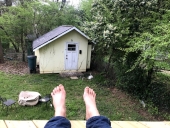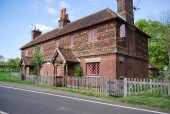
 7
7




 3
3




Since we live in AK I'm trying to maximize my energy output.
if you buy the wood, it costs less to operate than natural gas
Invasive plants are Earth's way of insisting we notice her medicines. Stephen Herrod Buhner
Everyone learns what works by learning what doesn't work. Stephen Herrod Buhner
 6
6




Visit Redhawk's soil series: https://permies.com/wiki/redhawk-soil
How permies.com works: https://permies.com/wiki/34193/permies-works-links-threads
 3
3




 1
1




John Daley Bendigo, Australia The Enemy of progress is the hope of a perfect plan
Benefits of rainfall collection https://permies.com/t/88043/benefits-rainfall-collection
GOOD DEBT/ BAD DEBT https://permies.com/t/179218/mortgages-good-debt-bad-debt
 3
3




Invasive plants are Earth's way of insisting we notice her medicines. Stephen Herrod Buhner
Everyone learns what works by learning what doesn't work. Stephen Herrod Buhner








John Daley Bendigo, Australia The Enemy of progress is the hope of a perfect plan
Benefits of rainfall collection https://permies.com/t/88043/benefits-rainfall-collection
GOOD DEBT/ BAD DEBT https://permies.com/t/179218/mortgages-good-debt-bad-debt

 5
5




For all your Montana Masonry Heater parts (also known as) Rocket Mass heater parts.
Visit me at
dragontechrmh.com Once you go brick you will never go back!




John C Daley wrote:Anne, in my suggestion its not fuel oil being used, but old engine oil.
In many locations its not recycled and often dumped, and used in generally converted units its good.
Koler manufacture domestic sized units as well.
Invasive plants are Earth's way of insisting we notice her medicines. Stephen Herrod Buhner
Everyone learns what works by learning what doesn't work. Stephen Herrod Buhner
 7
7




Alak Cabin wrote: We're building our retirement home. Since we live in AK I'm trying to maximize my energy output. I'm following guidelines from the cold weather research center from our university. R-20, 4" of foam below a heated slab. Rigid foam around the the perimeter n horizontal 4' out. Closed cell urethane between 2x6 studs. Insulated house wrap for a thermal break. 3/4" dead air space. Pine board siding with chinking between the boards. Hopefully we will achieve over R-42 in the walls. R-62 in the lid with recycled materials.
We do not have access to national gas. So fuel oil fired Toyo boiler that will heat the floor and our hot water. And an oil drip stove that resembles a wood stove and requires no power in the living room.
Any constructive criticism is appreciated
 3
3




 4
4




 4
4




David Baillie wrote:We just finished building our icf home in central Ontario. Sounds like you are checking all the right boxes. I find too many people get bogged down in how you heat a structure instead of how efficient the structure is. A few things I did not hear from you that as a high efficiency builder I'd want to know.
1)ERV - tight homes need mechanical ventilation
2) windows - spend the money on triple paned windows they will pay for themselves within a few years.




John Daley Bendigo, Australia The Enemy of progress is the hope of a perfect plan
Benefits of rainfall collection https://permies.com/t/88043/benefits-rainfall-collection
GOOD DEBT/ BAD DEBT https://permies.com/t/179218/mortgages-good-debt-bad-debt
 3
3








D-1. Compacted
John Daley Bendigo, Australia The Enemy of progress is the hope of a perfect plan
Benefits of rainfall collection https://permies.com/t/88043/benefits-rainfall-collection
GOOD DEBT/ BAD DEBT https://permies.com/t/179218/mortgages-good-debt-bad-debt
 4
4




 2
2








John Daley Bendigo, Australia The Enemy of progress is the hope of a perfect plan
Benefits of rainfall collection https://permies.com/t/88043/benefits-rainfall-collection
GOOD DEBT/ BAD DEBT https://permies.com/t/179218/mortgages-good-debt-bad-debt




John C Daley wrote:David, what does this mean please? ISO
Also I'd like to seeisoon the outside




 1
1




 1
1




Alak Cabin wrote:Hello all. I've been researching reflex house wrapping insulation. According to the information I can achieve up to R-21 if I use the white faced 5/16" material. If I have a minimum 3/4" dead air space on each side. With using 3/4"x1-1/2" wood lathe strips on the outside and closed cell urethane on the other I can achieve this.
This was according to how I understood the manufacturer instructions. Has anyone here used this product ? Can you all see any risks? Thanks, all advice is constructive








a type of Ridgid closed cell foam board.John C Daley wrote:David, what does this mean please? ISO
Also I'd like to seeisoon the outside
 4
4





|
Listen. That's my theme music. That's how I know I'm a super hero. That, and this tiny ad told me:
Learn Permaculture through a little hard work
https://wheaton-labs.com/bootcamp
|






